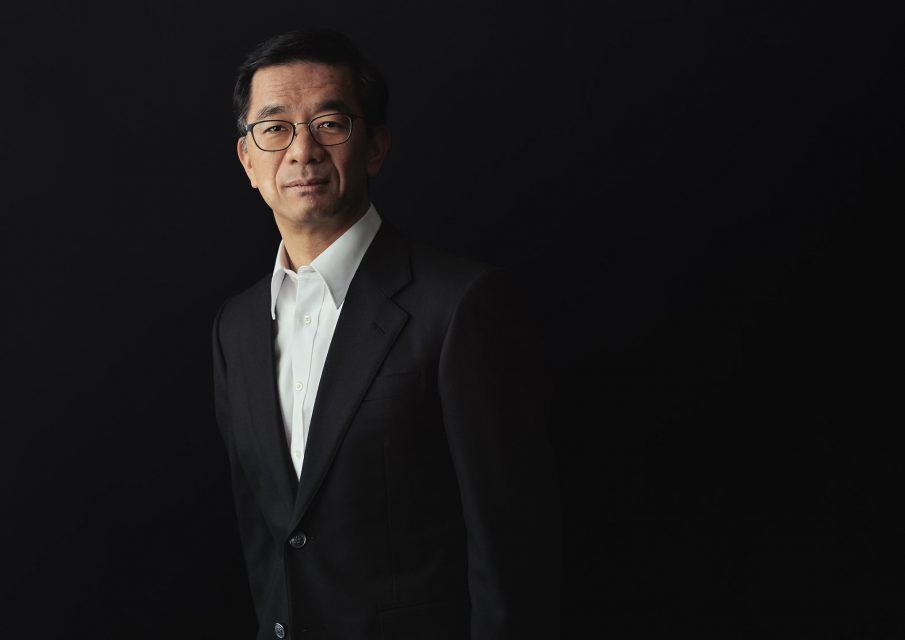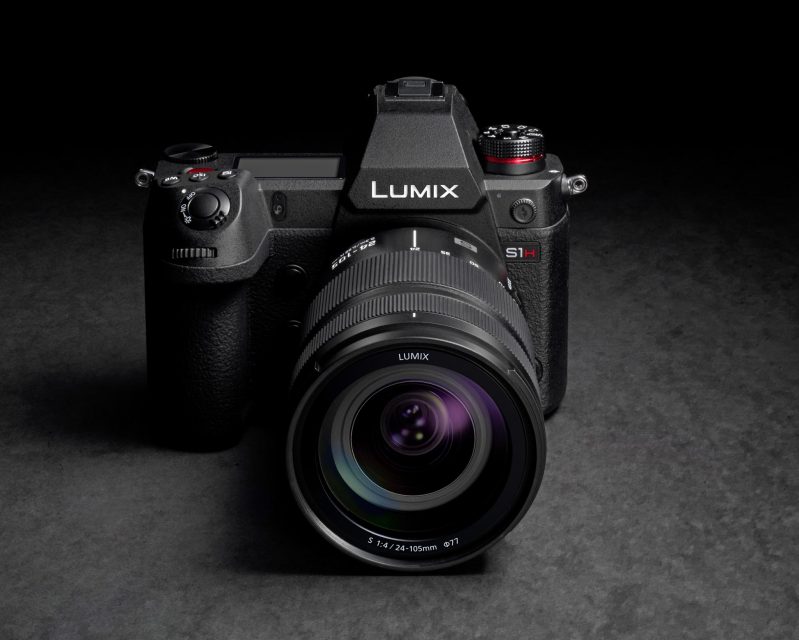S1H
The Panasonic Lumix DC-S1H launched at 12:30pm at Cine Gear on May 31, 2019.
The S1H is a full-frame, 36mm x 24mm sensor, 24p, 6K video camera “hiding” in the body of a DSLM. The shape makes it great as a grab camera, handheld, on rigs, gimbals, drones, or fully outfitted with a studio rig. It gets interesting when you want to capture video and not look like a filmmaker but rather a street photographer in search of Significant Moments.
The name is suggestive: “S” as in Specialized and “H” as in High Performance, High-End and Hybrid. The S1H is color-matched to the rest of the Panasonic VariCam line. It has a dynamic range of more than 14 stops. Best of all, there’s a full-frame, 3:2 (1.5:1) aspect ratio sensor. Panasonic, Sigma and Leica are partners in the L-Mount Alliance. That means there are many L-mount lenses ready now. And because the L-Mount has a flange focal depth of 20mm and an inside diameter of 51.6 mm, you can attach PL, LPL, PV and other lenses by using mechanical adapters.
Discussion with Mr. Yosuke Yamane on Panasonic DC-S1H
I met Mr. Yosuke Yamane, Director of Panasonic’s Imaging Network Business Division, at an L-mount Alliance unofficial dinner last November. The main topic of conversation was the increasingly rapid convergence of stills and cine. In the following discussion, those connections become even more compelling with the announcement of Panasonic’s new S1H camera.
JON FAUER: What is the meaning of the “S” in the S series?
YOSUKE YAMANE: The S1, S1R, and now the S1H that we have just announced, were developed from our strong desire to offer a specialized tool for professionals and amateurs to enable them to capture their creative vision and to record their significant moments. Perhaps it is “S” as in “Significant Moments,” what our friends at Leica call “Decisive Moments,” without any compromise. As a pioneer in the mirrorless system, the name “S” carries our passion to enable serious photographers in various categories to expand their range of work and to pursue the creative expression of still and video.
When did you start development of the S1H?
We began to consider the full-frame concept beginning 8 years ago, but we created S1H concept in 2017, at the same time as the S1R and S1.
Did you consider the wishes and demands of users at the early stages of planning and design?
Yes. We talked to cinematographers and crews who were using the GH5 series as well as VariCam and EVA1. We gathered comments and visited their shooting locations worldwide to investigate what kind of camera and video shooting style they were looking for. We developed the S1H to include customer needs and the virtues of a single lens/LUMIX system, and created a camera that we trust will offer new value.
What is the meaning of “H” in S1H?
It has the same meaning as the “H” in GH5: High Performance, High-End and Hybrid. We aimed to create a camera that has not only high photographic performance but also high video performance that will be accepted by the cinema industry and the high-end of video content creation. At the same time, we also would like to include our will to succeed in the GH series’s DNA with the GH5/GH5S.
When will the sales begin?
Sorry, that cannot be disclosed as this is the development announcement, but we would like to target fall of 2019.
Why will S1H ship later and not concurrent with S1 and S1R?
When we developed our first full-frame camera, S1 and S1R, we focused our development resources to meet the professional photographers’ needs. Our efforts were to realize a high performance, flagship camera without compromise. In addition to this, S1H’s concept is intended to meet the needs of cinematographers and high-end videographers. So, more time was necessary to develop new features. An example of this is the lack of time limits for video recording in a full-frame camera.
Although it is not the same timing as the S1R/S1, we are very proud of our engineering team. They were on time to meet the development announcement of the S1H: only six months after the S1/S1R was released. This was very difficult task to achieve.
How do you differentiate the positioning of S1H in the market and the target customers from those of S1?
S1 targets new creators who want to work mainly in still photography but also shoot some video. S1H is focused more on video, targeting cinematographers who work on movies, TV, commercials, corporate films, independents and other content creation that is at the top end of motion picture production.
How do you differentiate the positioning in the market and the target customers from those of VariCam EVA1?
The main customers of EVA1 and of S1H could basically be the same, and we think both cameras can be used on the same projects. They both have similarities in look and format, but they also have their own unique features. EVA1 could be the main camera (“A” camera) on a motion picture production. Of course, it has a Super35 sensor size that many users are familiar with.
We expect S1H could play an important role in various situations because of its mobility and high potential for interesting visual story-telling thanks to picture quality, shallow depth of field and other functions such as Super35 cropping and anamorphic.
I’m delighted to hear that S1H includes anamorphic capability. Another question: how do you differentiate S1H market positioning and target customers from those of GH5/GH5S?
The main use of the GH series, we think, is when you would like to enjoy deeper depth of field that also remains pleasing. You might also like the size and mobility that is available in the GH mirrorless system, for example, at weddings or event recording.
S1H is the camera that has the look and depth of field of full-frame. We are developing it for those who demand even higher picture quality. In the production of movies, commercials and various content creation, the S1H offers 6K 24p in 3:2 aspect ratio using the full area of the full-frame sensor and 5.9K 30p recording in 16:9 aspect ratio, among many other functions.
How do you see the future of full-frame products in the cinema industry? Will the full-frame category continue to grow?
We believe that the full-frame market will grow further in the near future as it has huge potential in terms of resolution, depth of field and noise level, which are essential for the cine production industry to improve picture quality.
When will an 8K camera be coming?
We have announced the 8K ROI (Region of Interest) camera to be released in July 2019. We cannot comment on any future product development of LUMIX.
Do you plan to develop Cine Lenses?
First, we plan to concentrate on developing L-Mount cameras that can maximize the performance of superb quality L-Mount lenses, including those from LEICA and SIGMA as well as ours. We cannot comment on any future plans but we will keep studying how we should contribute to the cinema industry by carefully listening to customers’ voices.
Do you plan to sell different mount versions such as EF?
No. We will develop only L-Mount cameras as a member of the L-Mount alliance.
Why does the S1H have the shape of a DSLM (Digital Single-Lens Mirrorless) camera? Why not design it like a camcorder?
The DSLM/DSLR-like form factor is well accepted by the cine industry, thanks to the following points:
- Easy shooting when handheld
- Good operability and handling, including interchangeable lenses and balanced weight
- Compactness, including rigs and cages
- Good balance on a gimbal
- Good size on a drone
Excuse me for asking difficult questions. Do you plan on a shoulder-type Full-Frame L-mount camcorder? And what about a high sensitivity version, like the GH5S?
Sorry, we cannot comment on future plans. We will keep developing new products while closely listening to customers’ voices.
Is this a full-frame version of GH5/GH5S? Is the major difference sensor size?
The concept itself might not be far from a “Full-Frame Version of GH series,” but each camera in the GH and S1H series have their own features that suit the needs of each customer such as sensor size, body size and other functions. Please wait for the official announcement as this is just the first development announcement.
What are the differences between S1 and S1H as a cine camera for professionals?
Today, we can disclose only 3 major differences because this is our official development announcement:
• 6K 24p recording in 3:2 and 5.9K 30p recording in 16:9
using full-area of the full-frame.
• 10-bit 4K 60p recording.
• Unlimited recording time.
Please wait for the official announcement with more details.
Does S1H work with PL mount or EF mount cine lenses?
Yes, it will work with Cine lenses and PL lenses with the mount adapters of L-mount alliance.
Congratulations. I’m sure many people at Cine Gear will be extremely eager to get their eyes to the eyepiece of the S1H.
S1H Anamorphic
Panasonic engineers tell us that the S1H is anamorphic friendly. Since the GH cameras offer 1.3x and 2x desqueeze, presumably that means the S1H will desqueeze and display anamorphic images correctly.
L-Mount Alliance
Readers of FDTimes may have been following the quixotic quest for some kind of standardization in lens mounts. Alas, the opposite has happened. However, there’s one beacon of cross-company compatibility and that is the L-Mount Alliance between Panasonic, Leica and Sigma. The L-Mount has a Flange Focal Depth of 20mm. The mount’s inside diameter is 51.6mm. With mechanical adapters, you can attach almost any lens greater than or equal to 20mm FFD.
Leica launched the L-Mount (originally called T-Mount) with their Leica T (APS-C) mirrorless, interchangeable lens camera in 2014. A year later, the Leica SL (Typ 601) arrived: Leica Format (36x24mm), mirrorless, autofocus, with the same mount now renamed “L-Mount.” Panasonic has announced ten L-mount lenses by 2020. Leica announced eight SL lenses and Sigma plans eleven L-Mount Art Series Full Frame lenses. Various sources suggest a total of 42 L-Mount lenses by the end of 2020.
At Photokina in September 2018, Dr. Andreas Kaufmann, Chairman of the Supervisory Board of Leica Camera AG said, “In the rapidly growing market for mirrorless system cameras, users seek increasingly greater product diversity to fulfill a wide range of different photographic needs. To meet these needs, we have decided to work together with prominent partners in the photographic segment.”
Mr. Junichiro Kitagawa, Executive Officer of Panasonic Corporation said, “Panasonic has always focused on revolutionizing the camera sector. Our longstanding partnership with Leica has enabled us to accelerate the development of excellent digital camera products, and the L-Mount alliance with Leica and Sigma is a great example of such acceleration. This is an alliance of growing players, which will make a fundamental difference to the future of the imaging industry.”
Mr. Kazuto Yamaki, Chief Executive Officer of SIGMA Corporation said, “As SIGMA strives to develop high performance, high quality and innovative products, this alliance will strengthen the level of our camera systems and provide greater user benefits. The L-Mount will evolve as an extremely attractive system for users. Sigma plans to release more than 14 new lenses in L-Mount.”
This article was distributed on paper for the launch at Cine Gear. Download it as PDF.










